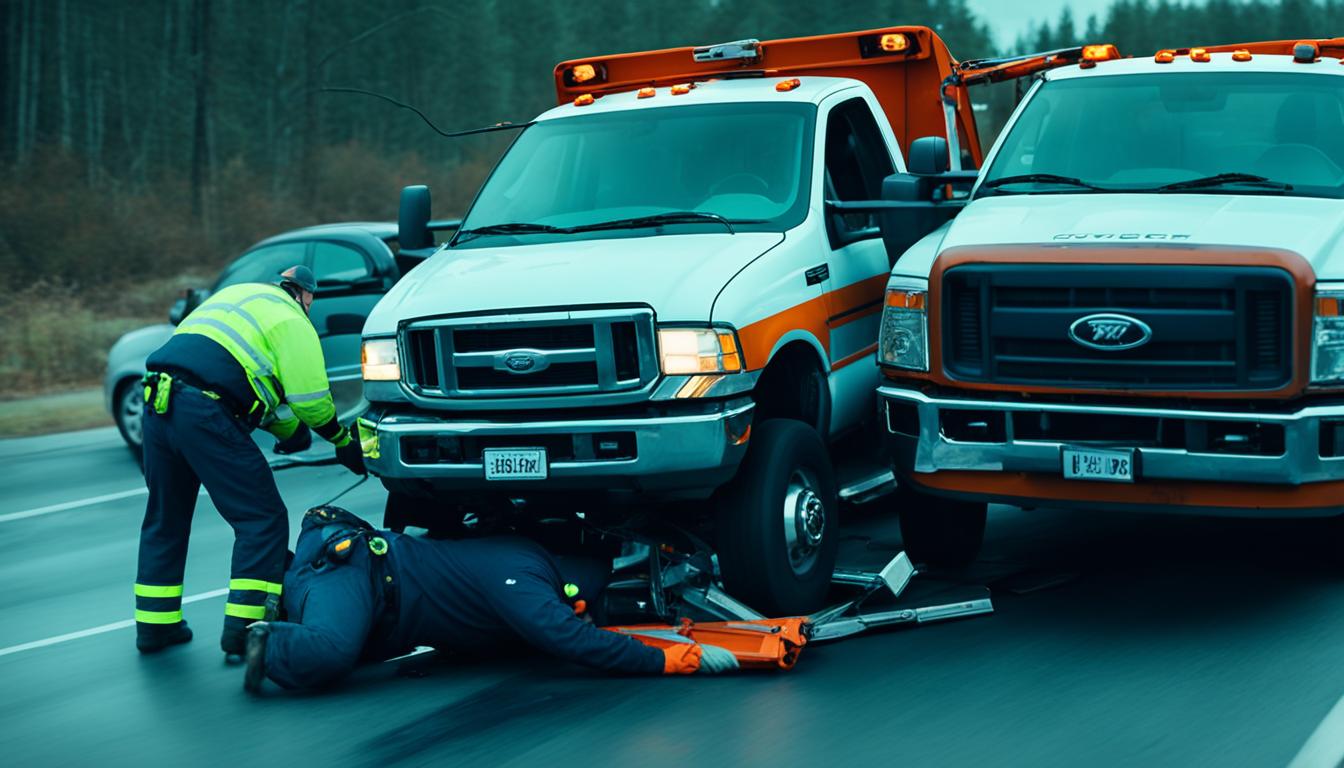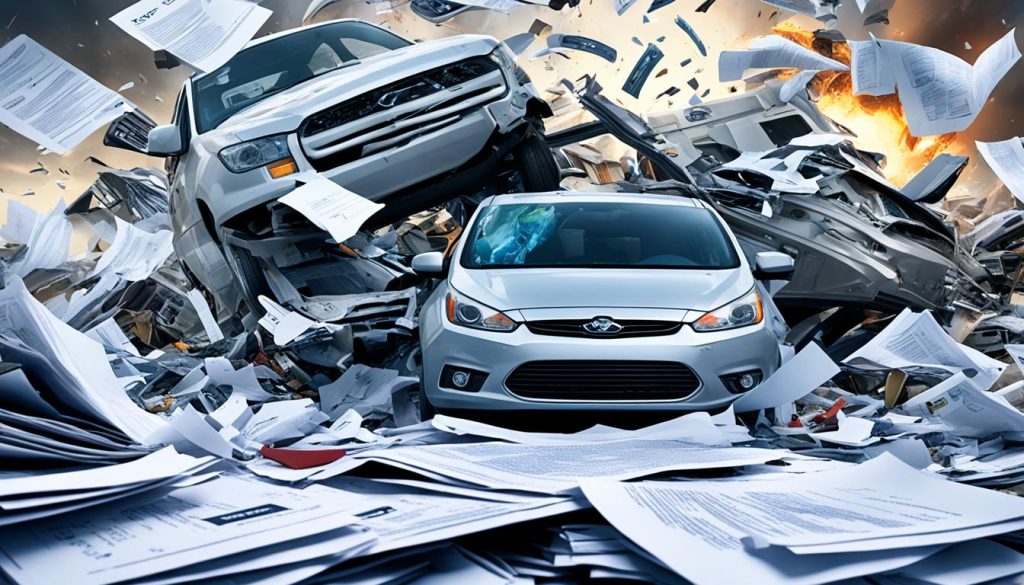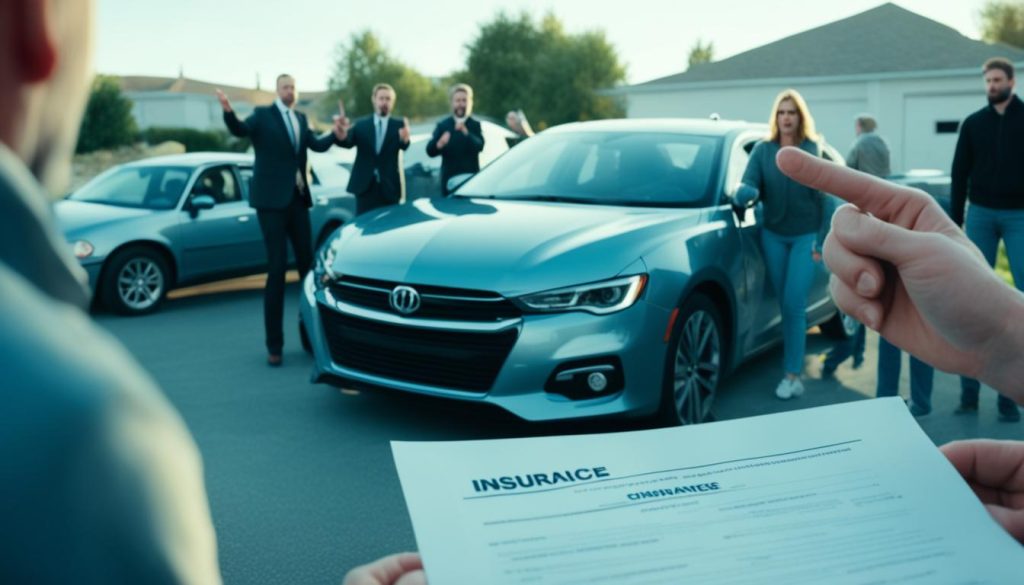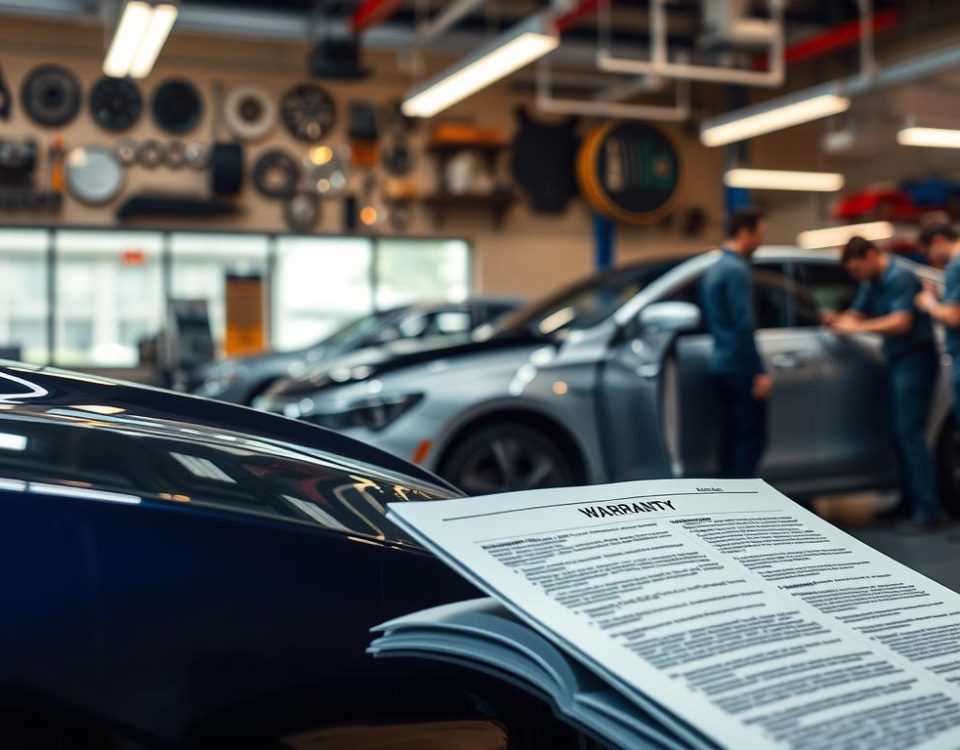
Preventive Measures to Avoid Future Collision Damage

The Benefits of Roadside Assistance After a Collision
Navigating the roads in the United States can be a daunting experience, with the ever-present risk of being involved in a traffic accident. Whether it’s a minor “fender bender” or a major collision, understanding your insurance policy is crucial to ensuring a smooth claims process and protecting your financial well-being. In this article, we will explore the essential details you need to know about insurance policies for collision repair, empowering you to make informed decisions and avoid costly mistakes.
Key Takeaways
- Thoroughly review your insurance policy to understand the coverage, policy limits, and deductibles.
- Be aware of your rights as a consumer, including the right to choose a repair facility and the process for obtaining repair estimates.
- Learn how to navigate the claims process effectively, from reporting the accident to evaluating vehicle damage and rental vehicle coverage.
- Familiarize yourself with the steps to resolve disputes and identify potential insurance fraud.
- Understand your rights regarding the use of replacement parts during the repair process.
Your Rights as a Consumer
As a consumer seeking auto body repair services, it’s important to be aware of your rights. In California, you have the legal right to choose any auto body shop to handle your collision repairs, unless your insurance policy specifies otherwise. This is outlined in the California Motorists Bill of Rights.
Right to Choose Repair Facility
When it comes to repairing your vehicle after an accident, you have the freedom to select the auto body repair shop of your choice. This ensures that you can work with a provider you trust to deliver high-quality workmanship and excellent customer service.
Notification to Insurance Company
Before proceeding with repairs, it’s crucial to notify your insurance company. Most policies require you to file a sworn proof of loss and present the damaged property for examination. This step helps streamline the claims process and ensures your coverage is applied correctly.
Obtaining Repair Estimates
Contrary to popular belief, you are not obligated to contact multiple shops for repair estimates. California law mandates that you receive a written estimate from the auto body repair shop of your choice before the repairs are performed. This provides you with the information needed to make an informed decision.
Understanding your rights as a consumer is essential when navigating the auto body repair process. By being aware of your options and the legal requirements, you can ensure a smooth and satisfactory experience, protecting your interests and ensuring your vehicle is properly repaired.
Understanding Insurance Policies
When it comes to protecting your vehicle, understanding the details of your insurance policy is crucial. As you purchase insurance, carefully review the application before signing to ensure the coverages, policy limits, and deductibles align with your needs. Once you receive the policy, take the time to thoroughly examine the declaration page, which outlines vital information such as the covered drivers, identified vehicles, coverage limits, and deductibles.
It’s important to verify that the information on the declaration page is accurate and the coverage matches what you originally purchased. If any changes are required, promptly communicate your requests to your agent and/or insurance company in writing, and retain a copy for your records.
Within your insurance policy, you’ll find information about the coverage it provides, including liability, collision, comprehensive, and uninsured/underinsured motorist coverage. Familiarize yourself with the deductibles associated with each type of coverage, as these out-of-pocket costs can significantly impact your overall financial responsibility in the event of a claim.
- Carefully review your insurance policy application before signing
- Examine the declaration page to ensure the information is accurate and the coverage matches your expectations
- Understand the different types of coverage and their associated deductibles
- Communicate any changes or corrections to your agent or insurance company in writing

By taking the time to thoroughly understand your insurance policy, you can rest assured that you have the appropriate coverage and deductibles in place to protect your vehicle and your financial well-being in the event of an accident.
Navigating the Claim Process
After filing a claim with your insurance company, a claim representative should contact you within a reasonable period to gather detailed information about the accident. As part of the investigation, the insurer may take a written or recorded statement, and in some cases, request an examination under oath.
Reporting the Accident
The first step in the claim process is to report the accident to your insurance provider. Provide them with the details of the incident, including the date, time, location, and a description of the vehicle damage.
Evaluating Vehicle Damage
The insurance company will typically send an adjuster or appraiser to inspect the vehicle and write an estimate based on the initial inspection. If further damage is found during the repair process, the shop will need to get approval from the insurer for the additional repair costs.
Rental Vehicle Coverage
Most standard auto policies provide coverage for rental vehicles while your car is being repaired, subject to policy limits. This can help alleviate the inconvenience of being without a vehicle during the claim process.
By understanding the steps involved in the claim process, from accident reporting to evaluating vehicle damage and rental car coverage, you can navigate the claim process with confidence and ensure your rights as a consumer are protected.
Resolving Disputes and Fraud
If you encounter any issues with your insurance company, your first step should be to consult with your insurance agent or broker. They can often help resolve conflicts and ensure you receive the coverage you’re entitled to under your policy. However, if the issue remains unresolved, you have the option to seek assistance from the California Department of Insurance.
The California Department of Insurance plays a crucial role in protecting consumers from insurance disputes and fraud. They ensure insurance companies adhere to fair practices and can intervene on your behalf to help resolve any conflicts you may have with your insurer. Additionally, the Bureau of Automotive Repair can address complaints concerning the repair of your vehicle by an auto body shop, ensuring you receive quality workmanship and fair treatment.
- The California Department of Insurance can assist in resolving disputes with your insurer.
- The Bureau of Automotive Repair can address complaints about the repair of your vehicle by an auto body shop.
- Consulting your insurance agent or broker first can often help resolve conflicts with your insurance company.

Remember, it’s important to be proactive and advocate for your rights as a consumer when it comes to insurance disputes and fraud. By understanding the resources available to you and taking the necessary steps to resolve any issues, you can ensure you receive the coverage and protection you deserve.
Your Rights Regarding Replacement Parts
When it comes to collision repair, the choice of replacement parts can be a crucial factor. Insurers have a responsibility to ensure that the parts used in the repair process are of equal quality, safety, fit, and performance as the original equipment manufacturer (OEM) parts. This means that insurers cannot simply require the use of non-OEM replacement crash parts unless they can guarantee that the alternative parts meet the same standards.
If non-OEM parts are specified by the insurer, they must cover any necessary modifications and provide warranties equivalent to those of OEM parts. This protects consumers from potential issues that may arise from the use of inferior replacement parts. It’s important to understand your rights and advocate for the best possible outcome when it comes to the repair of your vehicle.
Remember, as a consumer, you have the right to choose the repair facility that will handle the work on your vehicle. This gives you control over the quality of the parts and the workmanship involved in the repair process. By working closely with your insurer and the repair shop, you can ensure that your vehicle is restored to its pre-accident condition using high-quality replacement parts, whether they are OEM parts or non-OEM parts of equal quality.
- Insurers cannot require the use of non-OEM replacement parts unless they are of equal quality, safety, fit, and performance as OEM parts.
- If non-OEM parts are specified, insurers must cover any necessary modifications and provide warranties equivalent to those of OEM parts.
- As a consumer, you have the right to choose the repair facility that will handle the work on your vehicle.
Conclusion
Navigating the intricate world of insurance policies and collision repair can be a daunting task, but understanding your rights as a consumer is vital. By being aware of your freedom to choose any auto body shop for your repairs and familiarizing yourself with the claims process, you can make well-informed decisions and ensure your vehicle is properly restored.
Whether you require extensive collision damage repair or a minor fix, Miracle Body and Paint is committed to providing high-quality service and upholding your consumer rights. We understand the importance of seamless collision repair and will work diligently to restore your vehicle to its former glory, all while guiding you through the complexities of your insurance policy.
By navigating the challenges of collision repair and insurance coverage together, we can empower you to make the best choices for your vehicle and your peace of mind. Our dedication to customer satisfaction and adherence to industry standards will ensure that your car is repaired to the highest standards, allowing you to return to the road with confidence.



